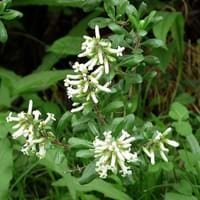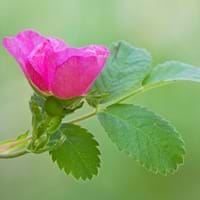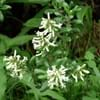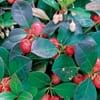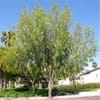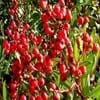Life Span
Perennial
Perennial
Type
Broadleaf Evergreen
Flowering Plants, Ornamental Plant, Perennial
Origin
Hybrid origin
California, Caribbean, Mexico
Types
Not available
Not Available
Habitat
Mountain Slopes
Chaparral, Foot Hills, Woodlands
USDA Hardiness Zone
7-9
Not Available
AHS Heat Zone
Not Available
Not Available
Sunset Zone
21,22
Not available
Habit
Upright/Erect
Upright/Erect
Flower Color
White, Pink
Variety of colors
Flower Color Modifier
Bicolor
Bicolor
Fruit Color
Not Available
Non Fruiting Plant
Leaf Color in Spring
Dark Green
Gray, Gray Green
Leaf Color in Summer
Dark Green
Gray, Gray Green
Leaf Color in Fall
Dark Green
Gray, Gray Green
Leaf Color in Winter
Dark Green
Gray, Gray Green
Leaf Shape
Irregular
Pinnate
Plant Season
Spring, Summer, Fall, Winter
Spring, Summer, Fall
Sunlight
Full Sun, Partial Sun
Full Sun, Partial Sun
Growth Rate
Medium
Medium
Type of Soil
Loam, Sand
Loam, Sand
The pH of Soil
Acidic, Neutral, Alkaline
Acidic, Neutral
Soil Drainage
Well drained
Well drained
Bloom Time
Summer
Spring, Late Spring, Early Summer, Summer, Late Summer, Early Fall, Fall
Repeat Bloomer
Yes
Not Available
Tolerances
Drought
Drought
Where to Plant?
Ground
Container, Ground, Pot
How to Plant?
Seedlings
Cuttings
Plant Maintenance
Medium
Medium
Watering Requirements
Average Water Needs
Average Water Needs
In Summer
Lots of watering
Lots of watering
In Spring
Moderate
Moderate
In Winter
Average Water
Average Water
Soil pH
Acidic, Neutral, Alkaline
Acidic, Neutral
Soil Type
Loam, Sand
Loam, Sand
Soil Drainage Capacity
Well drained
Well drained
Sun Exposure
Full Sun, Partial Sun
Full Sun, Partial Sun
Pruning
Remove damaged leaves, Remove dead branches, Remove dead flowers, Remove dead leaves
Remove damaged leaves, Remove dead branches, Remove dead leaves
Fertilizers
All-Purpose Liquid Fertilizer
All-Purpose Liquid Fertilizer
Pests and Diseases
Fungal leaf spots
Beetles, Black Spot, Caterpillars, Downy mildew, Mosaic viruses, Powdery mildew, Rust, Scale insects, Thripes
Plant Tolerance
Drought
Drought
Flower Petal Number
Single
Double
Edible Fruit
No
Not Available
Foliage Texture
Medium
Medium
Foliage Sheen
Glossy
Glossy
Invasive
No
Not Available
Self-Sowing
No
Not Available
Attracts
Bees, Birds, Butterflies
Birds, Butterflies
Allergy
Not Available
Rash
Aesthetic Uses
Beautification, Cottage Garden, Showy Purposes
Showy Purposes
Beauty Benefits
Not Available
Not Available
Environmental Uses
Air purification
Air purification
Medicinal Uses
Not Available
Not Available
Part of Plant Used
Flowers, Leaves
Flowers
Other Uses
Basketary, Used as firewood, Wood is used fore making tools
Oil is used in perfume, soaps, creams, etc.
Used As Indoor Plant
No
Yes
Used As Outdoor Plant
Yes
Yes
Garden Design
Foundation, Hedges, Mixed Border, Screening, Wind Break, Topiary, Bonsai, Espalier
Container, Cutflower, Feature Plant, Foundation, Mixed Border, Topiary / Bonsai / Espalier
Botanical Name
Escallonia resinosa
Rosa californica
Common Name
Escallonia
California wildrose, California rose
In Hindi
गम
कैलिफोर्निया गुलाब
In German
Gummi
Kalifornische Hecken-Rose
In French
gomme
Le rosier de Californie
In Spanish
goma
Rosa californica
In Greek
κόμμι
Καλιφόρνια αυξήθηκε
In Portuguese
goma
California aumentou
In Polish
guma
California róży
In Latin
Euonymus
California resurrexit
Phylum
Magnoliophyta
Magnoliophyta
Class
Magnoliopsida
Magnoliopsida
Order
Escalloniales
Rosales
Family
Grossulariaceae
Rosaceae
Clade
Angiosperms, Asterids, Eudicots
Not Available
Tribe
Not Available
Not Available
Subfamily
Escallonioideae
Not Available
Number of Species
Not Available
Properties of Escallonia and California Rose
Wondering what are the properties of Escallonia and California Rose? We provide you with everything About Escallonia and California Rose. Escallonia doesn't have thorns and California Rose doesn't have thorns. Also Escallonia does not have fragrant flowers. Escallonia has allergic reactions like Not Available and California Rose has allergic reactions like Not Available. Compare all the properties and characteristics of these two plants. Find out which of these plant can be used as indoor plant. If you are interested to decorate your house and garden, find out aesthetic uses, compare them and select the plant which will beautify your surrounding. Along with beautification, try comparing medicinal and edible uses of Escallonia and California Rose and you can choose the plant having best and most benefits.
Season and Care of Escallonia and California Rose
Season and care of Escallonia and California Rose is important to know. While considering everything about Escallonia and California Rose Care, growing season is an essential factor. Escallonia season is Spring, Summer, Fall and Winter and California Rose season is Spring, Summer, Fall and Winter. The type of soil for Escallonia is Loam, Sand and for California Rose is Loam, Sand while the PH of soil for Escallonia is Acidic, Neutral, Alkaline and for California Rose is Acidic, Neutral.
Escallonia and California Rose Physical Information
Escallonia and California Rose physical information is very important for comparison. Escallonia height is 150.00 cm and width 180.00 cm whereas California Rose height is 150.00 cm and width 150.00 cm. The color specification of Escallonia and California Rose are as follows:
Escallonia flower color: White and Pink
Escallonia leaf color: Dark Green
California Rose flower color: Variety of colors
- California Rose leaf color: Gray and Gray Green
Care of Escallonia and California Rose
Care of Escallonia and California Rose include pruning, fertilizers, watering etc. Escallonia pruning is done Remove damaged leaves, Remove dead branches, Remove dead flowers and Remove dead leaves and California Rose pruning is done Remove damaged leaves, Remove dead branches and Remove dead leaves. In summer Escallonia needs Lots of watering and in winter, it needs Average Water. Whereas, in summer California Rose needs Lots of watering and in winter, it needs Average Water.
